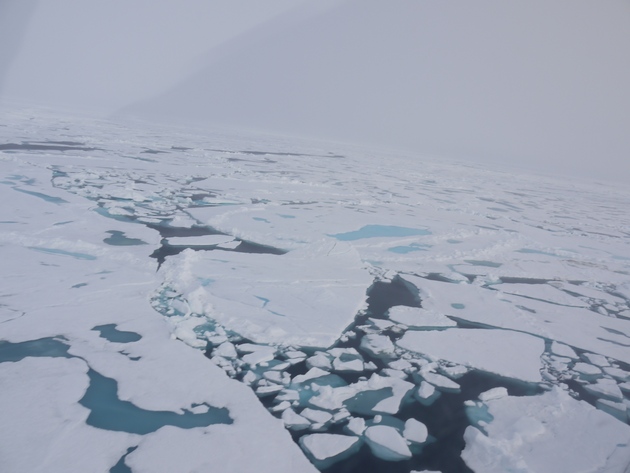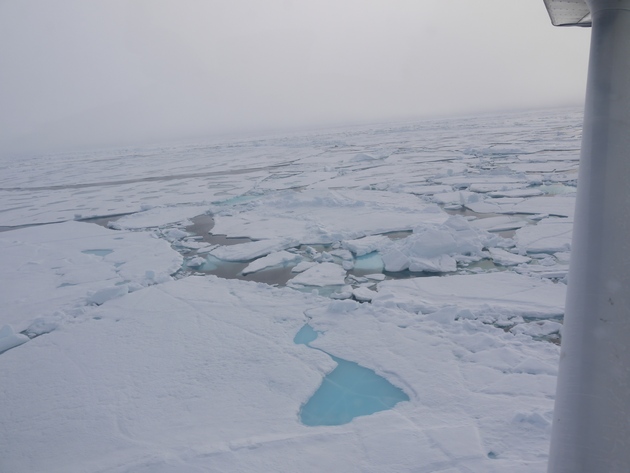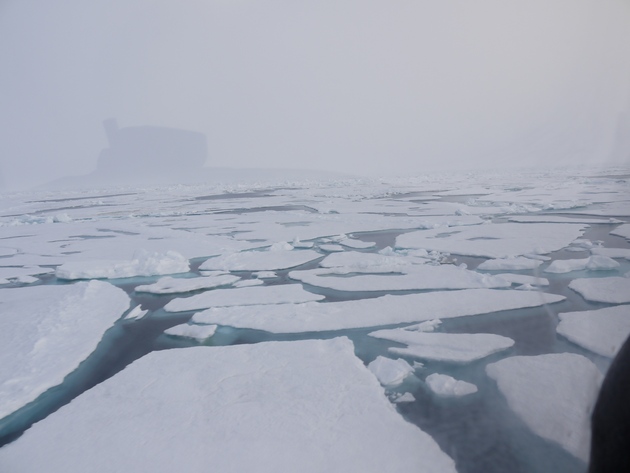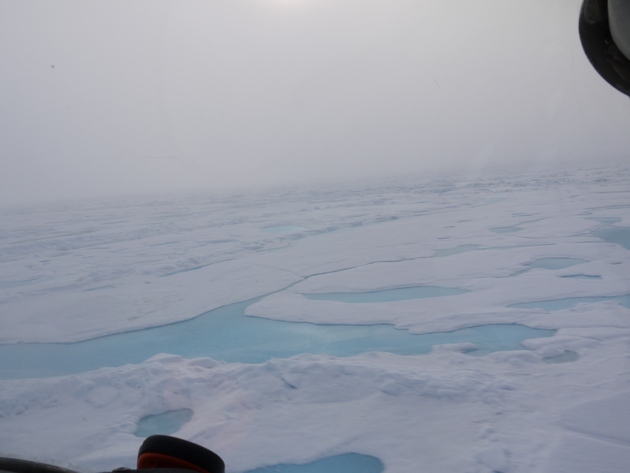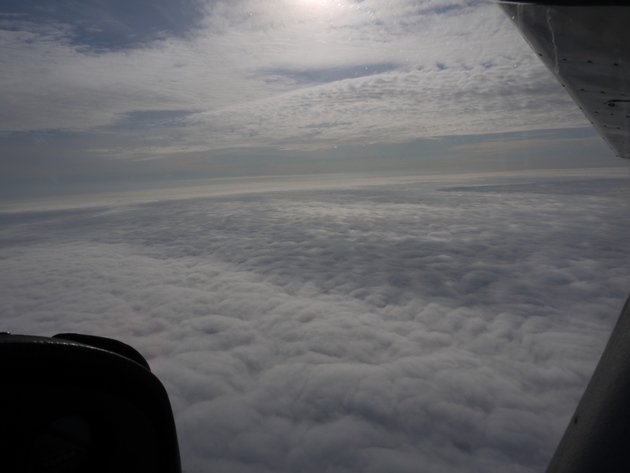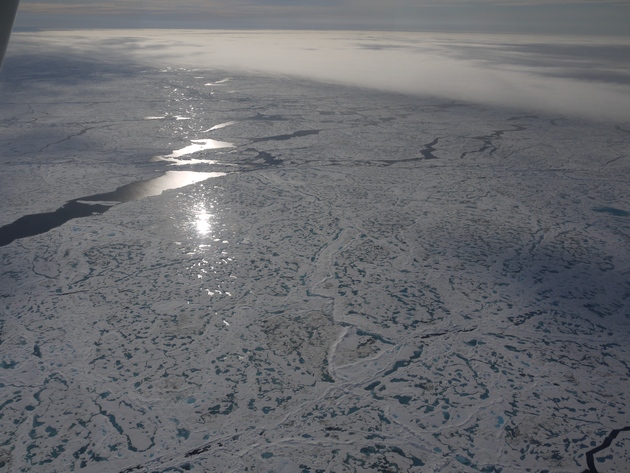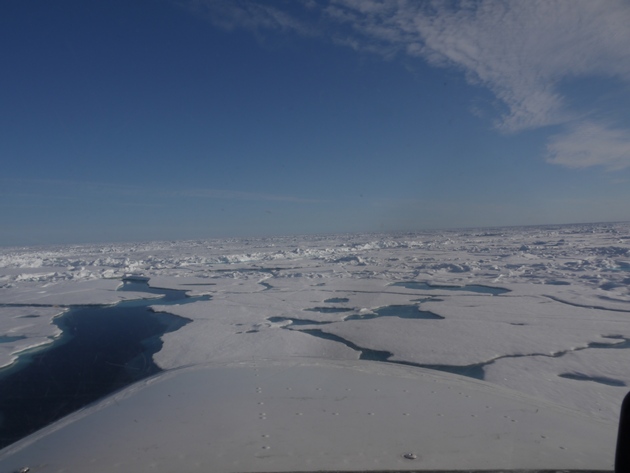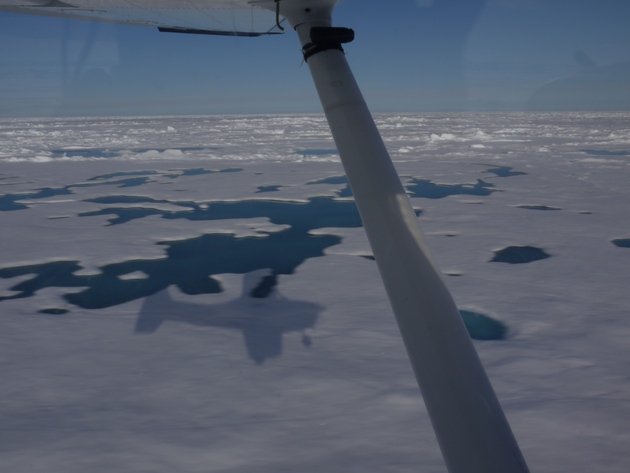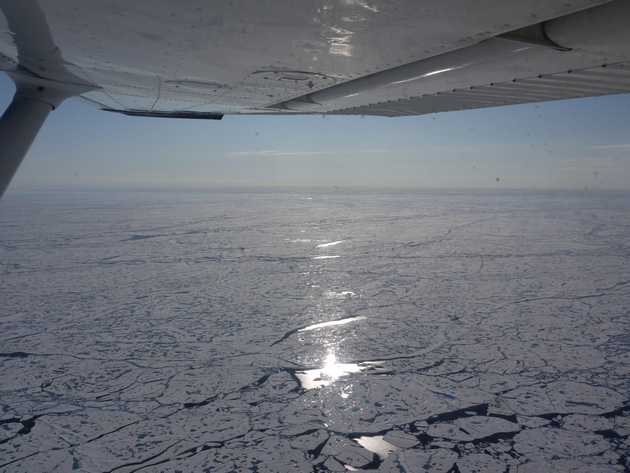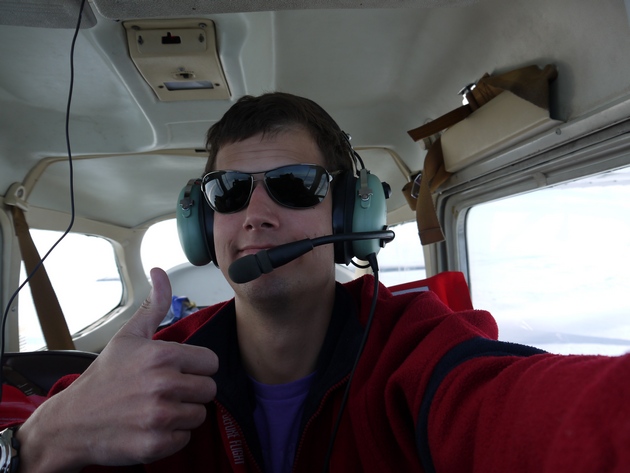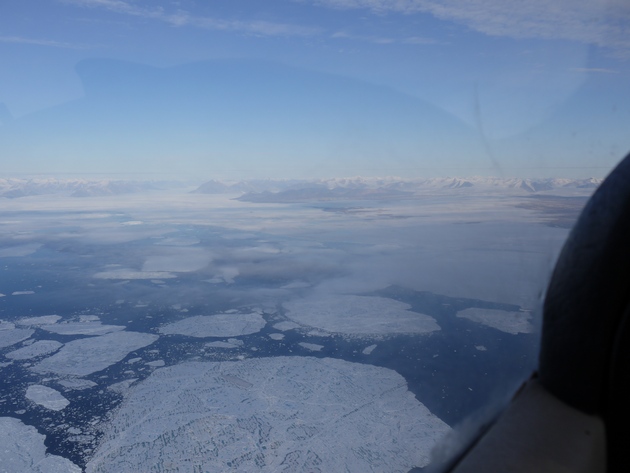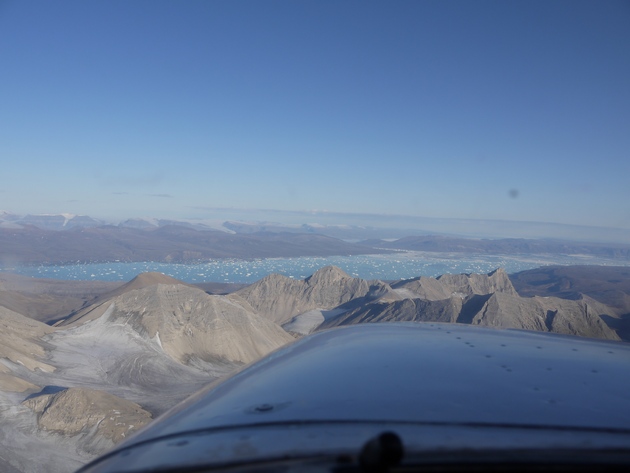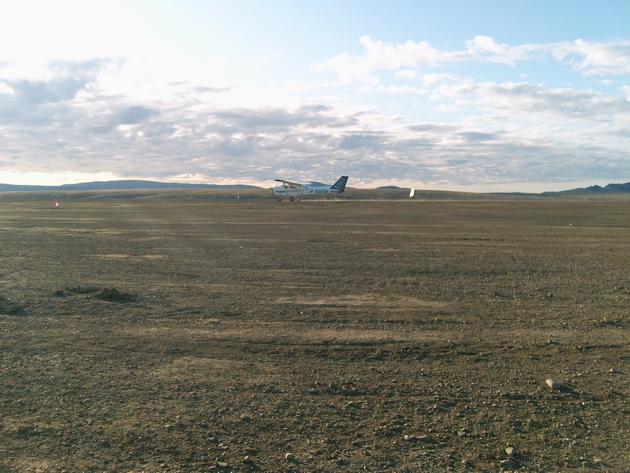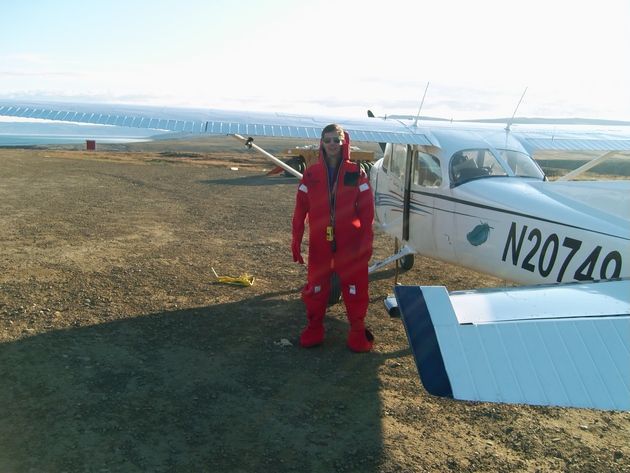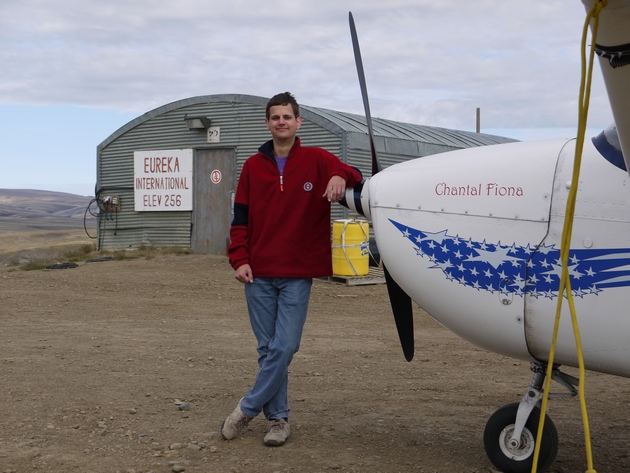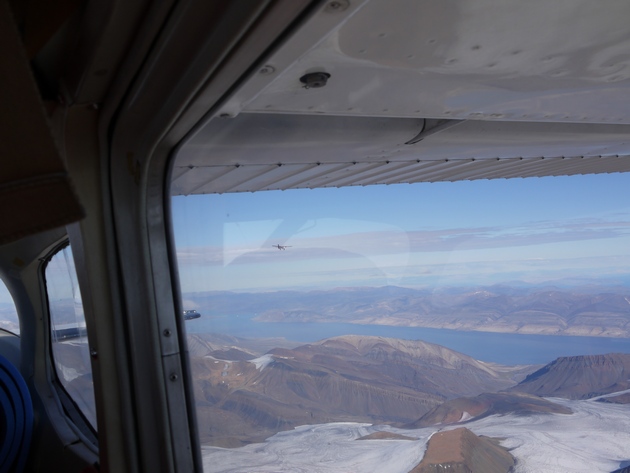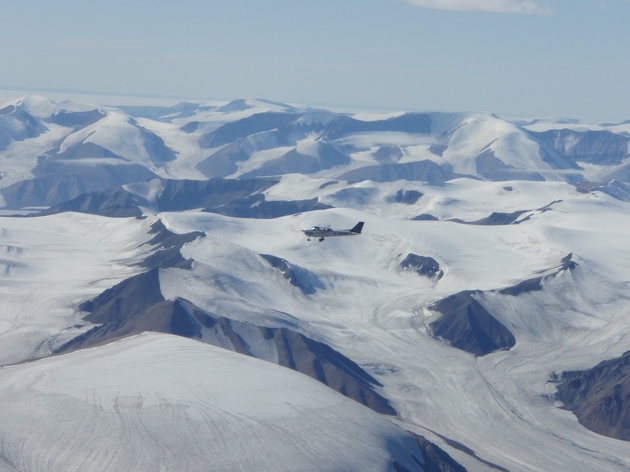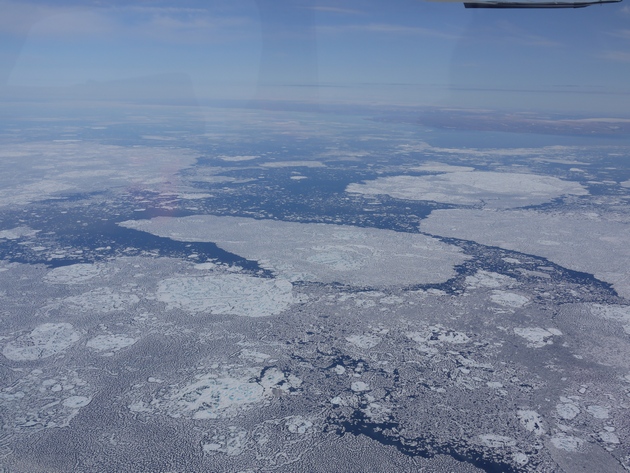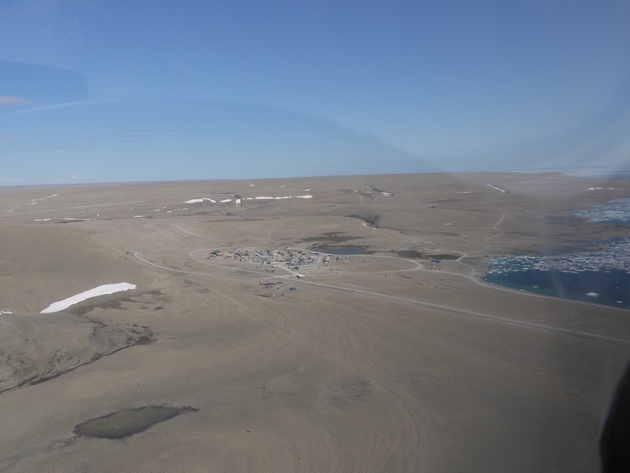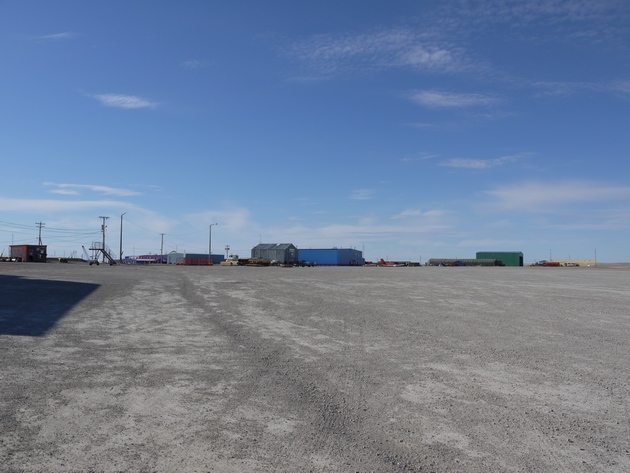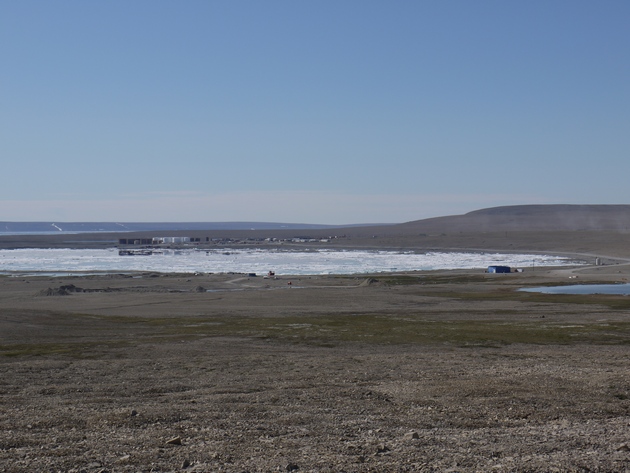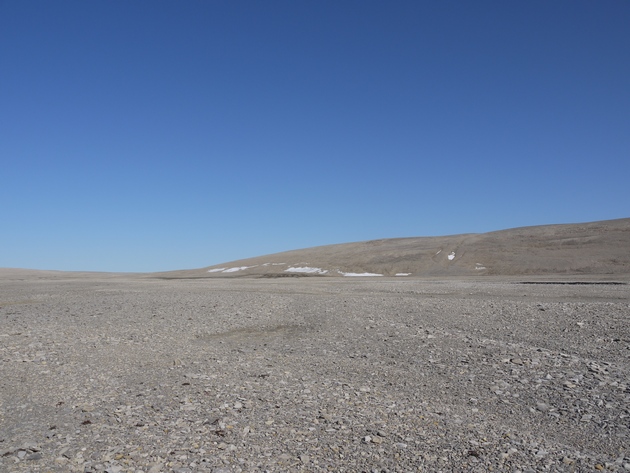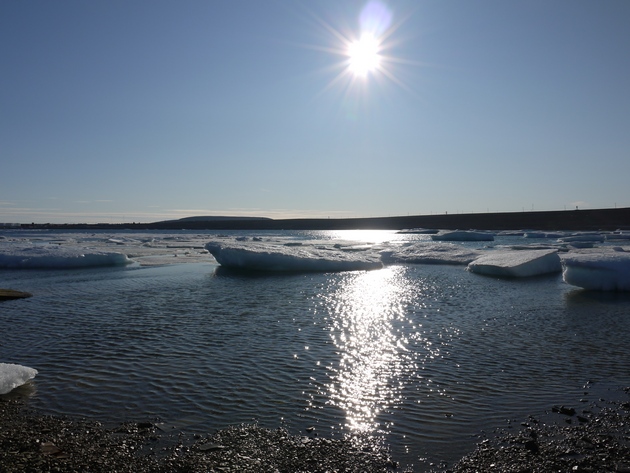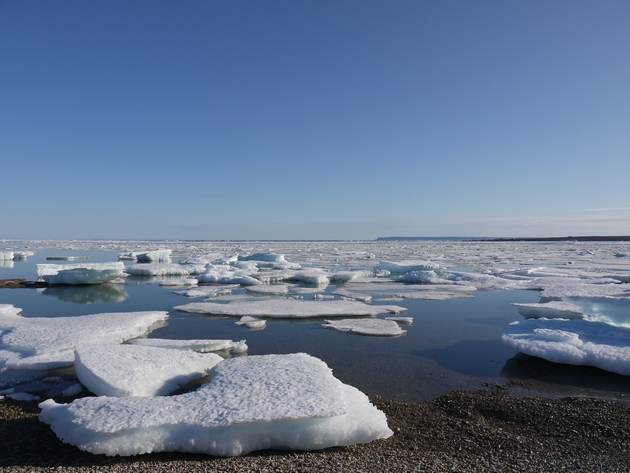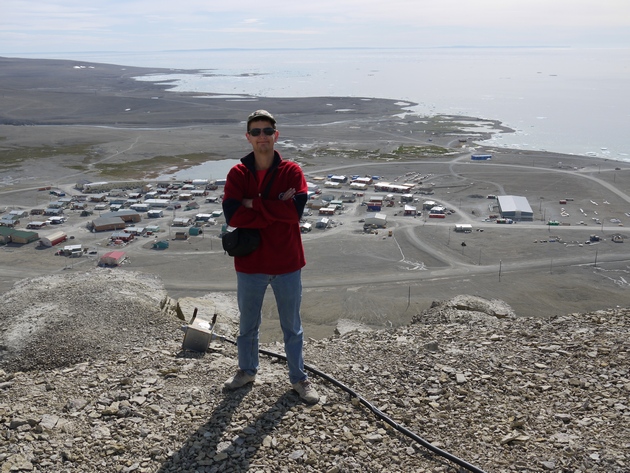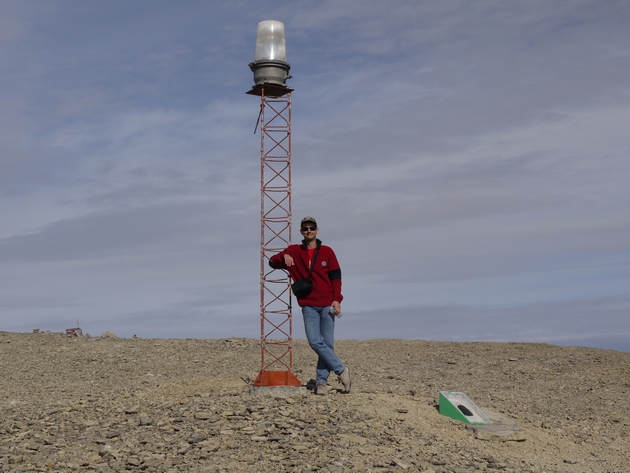18th of July: Murphy strikes
Full or energy I woke up around 10 local time. The weather station manager was chatting with some scientist just on the outside of the tent. I looked around and made sure I wasn’t dreaming. I was still feeling the effects of the adrenaline. Once I was up, the scientists told me a group of them would be leaving today as well on a chartered Kenn Borek Air flight. I started packing my stuff, and settled the bill with the manager. I filed another flight plan, my first south bound flight plan since the beginning of the trip. A little sad that it was about to end, but mainly happy that I achieved my goal, I prepared my plane. Of course there was a mandatory photo shooting session before I could leave.
I put the remaining fuel of the barrel into the wings, and collected all the useless stuff I left behind the day before from the airport building/shed. I squeezed everything back in the plane, made sure it was stable. While doing this, the chartered airplane landed. The scientist were driving around on one of the cool ATV’s and were performing some last minute research (or were just having fun, I couldn’t tell, but knowing scientists, it’s probably a bit of both). I double and triple checked everything to make sure I didn’t leave anything behind since I wouldn’t be coming back anytime soon…
Satisfied that everything was on board, all hooks were untied, I squeezed myself back in my immersion suit, probably for the last time. It was about this time the pilots from the big plane were rounding up their preparations. I waved goodbye to the scientists and told them I’d race them to Resolute Bay, our common destination.
I switched on the battery and heard the gyro’s spinning up. Mixture full rich, carburetor heat off, throttle 2 centimeter open, left clear, right clear, starter engaged. Nothing happened. Again, I engaged the starter engine. No sound, no movement. Nothing. I switched of the battery and tried again. Again, silence. I checked the circuit breakers. All looked good. Once more I tried engaging the starter. Still nothing happened. FUCK.
I jumped out of the airplane and got out of the immersion suit, walked up to the other aircraft and told them they would probably win the race. “By the way, you don’t happen to have a mechanic on board ?”. There was no mechanic on board. At that moment I felt all my energy draining from my body. It was a harsh realization that I was indeed all alone up there. Everybody there was doing their job, and I was the lunatic flying over there and using their resources and time. I was staring at the airplane in disbelief to find a possible solution. One of the scientists, Phil, saw my worried look and walked over to me.
Phil owned a Cirrus and knew some things about airplanes. He thought the starter might have trouble to lock on to the gears, so he advised me to rotate the propeller a bit. I did so and tried to start again. And guess what: nothing. The last option that remained on my “fix it yourself”-list was to handprop the airplane. With this technique, you give a very strong swing at the propeller while hoping that this will cause the engine to start running and hoping that you can remove your hand fast enough before it gets struck by the firing propeller. Ah yes, and don’t lose your balance so you don’t fall over into the propeller. Sounds easy and very safe!
Since I thought there were only 2 likely options: either the starter engine was broken, or the battery was too weak because of the cold (neither which would prevent a safe flight once the engine started) I decided to fly over to Resolute Bay if the engine would fire.
I checked the procedure with Phil. He said he knew how to do it, but also that he wasn’t going to do it. A decision I fully understood. Another scientist had joined me by now and he was eager to hand prop the airplane for me. He had extra gloves in his luggage, put them on and was willing to give it a try. First we tried a few swings without power and fuel, so he could feel how the propeller would react when it was not firing. After that, it was time to try the real thing. Battery switch on, select only the left magneto, prime a little bit, throttle few centimeters open, mixture rich. And a thumbs up. The first swing was unsuccessful. A few seconds later, he tried again. And again. And again. With every stroke I become more nervous and less optimistic. I shat everything down and rotated the propeller back a few degrees to empty the combustion chamber. Again, I hopped back into the airplane and set up the airplane. The brave scientist tried again. With no success. This was the 15th attempt already, and he didn’t want to quit. And then, after the 21st powerful stroke the engine came to life ! The engine was finally running! I turned on the alternator and checked it was generating power. Everything looked normal so I could start my taxi. With an extremely bright smile I taxied away from my parking spot and waved the scientist and the other airplane goodbye.
During the taxi I performed a long and very thorough run-up, checking every item twice looking for any anomalies. Luckily there were none. Except for the fact that I forgot to put on my immersion suit again due to the engine problems. Ah well, with a bit of an uncomfortable feeling of relief (or stupidity) I didn’t worry about it anymore at that time and without further delay I took off. This was the second time I took off from this airfield, yet another sign I was on my way back.
Twenty minutes later, I heard the other airplane checking in on the air-to-air frequency. They were flying to the same destination as me, following the same routing (direct). I asked them if they would be willing to take a picture of me. They would be happy to comply if they ever found me. Giving some rough position reports, we came to the conclusion I was 12 miles ahead of them. Fifteen minutes later the pilot told me he had me in sight and was coming up from the left. I only saw them when they were practically colliding with me. They slowed down a bit and descended to my altitude. For the next 5 minutes we took pictures from each other from every possible angle in every possible position.
But alas, for them it was a working day, so play time was soon over. We swapped e-mail addresses over the very bus arctic frequency (it took about 5 minutes to get our address through clearly) while I watched them climbing and disappearing in the distance. Leading the way for me to Resolute Bay.
During the flight I kept checking all the engine instrument and was very happy to see everything stayed as it should be. When crossing the patches of water, I regretted not wearing the immersion suit. I was fortunate this mistake remained without consequences. After a little more than 3 hours I saw something that looked like Resolute Bay airport. I was almost overhead the airfield when I realized I was lining up with a road instead of the runway. It was an uneventful landing.
Once landed I started to look for a mechanic. I soon found a lost mechanic on the apron, working on a huge aircraft. He redirected me to two of his colleagues. These two colleagues were very skilled and friendly, but they also enforced the stereotypical view one may have of mechanics. 30% of their sentences were build with the words “shit” and “fuck” and variants thereof. But again, very friendly guys, so I listened to their colorful language with a smile. For the very first time in my life I removed an airplane engine cowling myself. Adrenaline! To my very professional eye, everything looked perfectly fine (nothing exploded or started to burn, which I found a big advantage). Their professional eye however discovered the master relay was at least partially broken. My naïve question “so can I continue to fly with it when I hand prop the plane ?” was soon met with rolling eyes and a “sure, but if it breaks you will lose all your electricity, so we wouldn’t recommend it”. A new part it is.
Since I needed a new part, the first logic step was to call the owner. One of her employees answered the phone and connected me to the mechanic. He told me he’d ship the part over immediately with Fedex. They would deliver it anywhere in Canada within 3 days. I asked him if he knew where Resolute Bay was located. “Yes yes, they deliver anywhere in Canada withing 3 days!”. I decided to believe that. This would be a mistake.
I put the cowling back on the airplane, while it stood on the apron waiting for the part. It would stay there for a long time.
I called Aziz again, and he drove me back to his hotel. He told me he’d look for a spare part in one of his scrap yards. Ah well, at least I made it back to Resolute back, another 450 NM closer to civilization. And all of that in a broken airplane. In Aziz’s hotel I gave a short summary of the North Pole flight to the people I met there a few days earlier. After that, I went to bed, back in “my” room where I stayed 2 days earlier.
To be continued ...
Disclaimer: This is a work of fiction, loosely based on a true story. This is not an official report in any way. All rights reserved.
----------
Good bye Eureka
We've got a boogy on our six! Cleared to engage...
Ow yeah, cruising at 79°N
Icy water, I miss my suit
Resolute city
Save landing in Resolute

